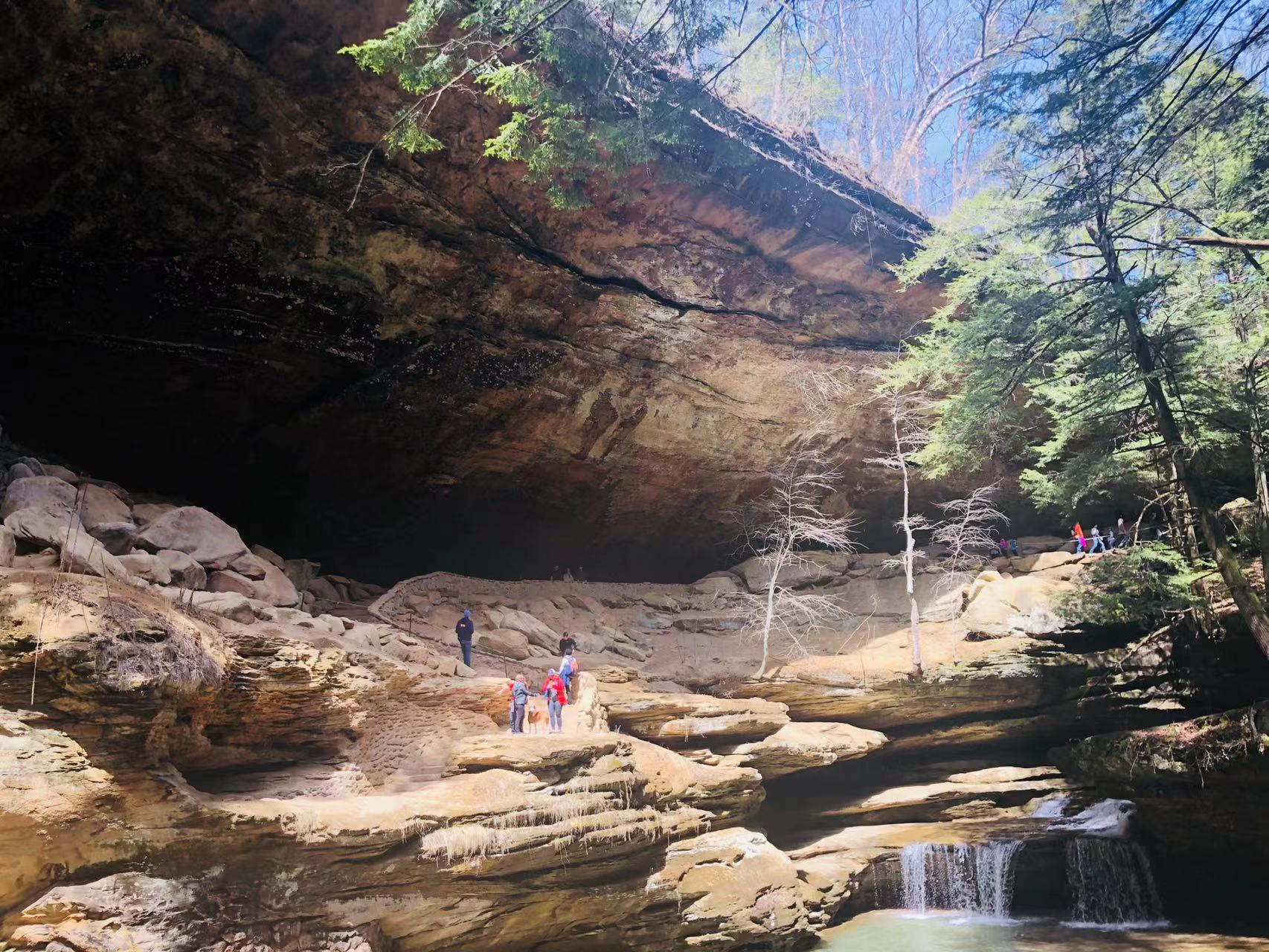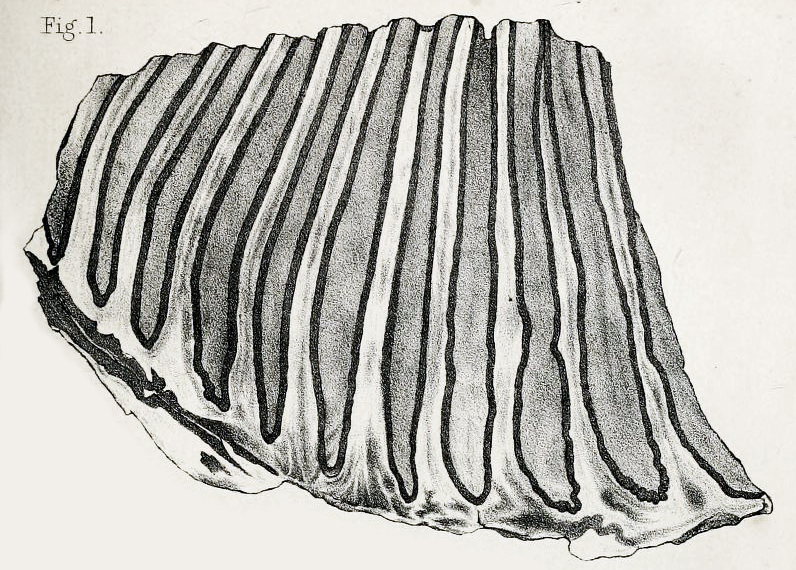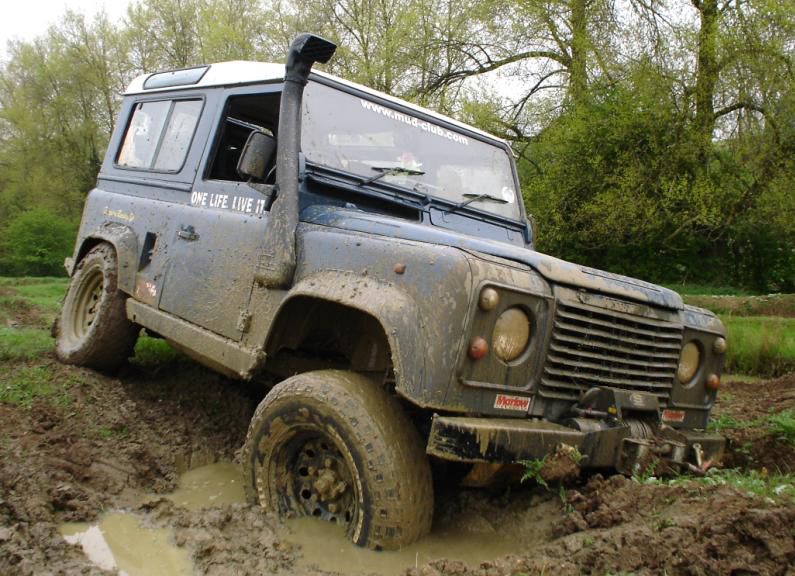|
Ice Age Fossils State Park
Ice Age Fossils State Park is a 315-acre state park in North Las Vegas, Nevada, United States, on the northernmost fringe of the metropolitan area. It is located adjacent to the Tule Springs Fossil Beds National Monument near Willie McCool Regional Park. This park is currently under construction and there are no facilities available to the public yet. Grand opening information will be posted to the park website and social media once a date has been determined. History Ice Age Fossils State Park was announced in January 2017 as part of Governor Brian Sandoval's $15 million "Explore Your Nevada" initiative. The grand opening of the visitor center and overall completion of the park will be sometime in 2023. The park originally was to be named Tule Springs State Park, but was named Ice Age Fossils State Park to avoid confusion with the Tule Springs Fossil Beds National Monument. The park is located on land that was wetlands during the last Ice Age of Prehistoric Nevada betwe ... [...More Info...] [...Related Items...] OR: [Wikipedia] [Google] [Baidu] |
State Park
State parks are parks or other protected areas managed at the sub-national level within those nations which use "state" as a political subdivision. State parks are typically established by a state to preserve a location on account of its natural beauty, historic interest, or recreational potential. There are state parks under the administration of the government of each U.S. state, some of the political divisions of Mexico#States, Mexican states, and in Brazil. The term is also used in the Australian states of template:state parks of Victoria, Victoria and state parks of New South Wales, New South Wales. The equivalent term used in Canada, Argentina, South Africa, and Belgium, is provincial park. Similar systems of local government maintained parks exist in other countries, but the terminology varies. State parks are thus similar to national parks, but under state rather than federal administration. Similarly, local government entities below state level may maintain parks, e.g., r ... [...More Info...] [...Related Items...] OR: [Wikipedia] [Google] [Baidu] |
Columbian Mammoth
The Columbian mammoth (''Mammuthus columbi'') is an extinct species of mammoth that inhabited the Americas as far north as the Northern United States and as far south as Costa Rica during the Pleistocene epoch. It was one of the last in a line of mammoth species, beginning with '' Mammuthus subplanifrons'' in the early Pliocene. DNA studies show that the Columbian mammoth was a hybrid species between woolly mammoths and another lineage descended from steppe mammoths; the hybridization happened more than 420,000 years ago. The pygmy mammoths of the Channel Islands of California evolved from Columbian mammoths. The closest extant relative of the Columbian and other mammoths is the Asian elephant. Reaching at the shoulders and in weight, the Columbian mammoth was one of the largest species of mammoth. It had long, curved tusks and four molars, which were replaced six times during the lifetime of an individual. It most likely used its tusks and trunk like modern elephants—for ... [...More Info...] [...Related Items...] OR: [Wikipedia] [Google] [Baidu] |
Bear Poppy
''Arctomecon'' is a genus of the poppy family Papaveraceae commonly called the bear poppies or bear-paw poppies, after the distinctive appearance of the leaves. The three species occur only in the northeastern part of the Mojave Desert of North America, and are all uncommon. The plants consist of one or a cluster of basal rosettes of leaves with a generally light blue or grey appearance. Closer examination shows the leaves to be generally wedge-shaped, with the end of each divided into several teeth, and entirely covered with long hairs 5–15 mm in length. The effect is that of a hairy bear paw, whence both common and scientific name (''arktos'' bear + ''mecon'' poppy). The solitary terminal flowers are typical of poppies, with 2-3 sepals and 4-6 petals, either white or yellow, and starting out as nodding bud before become erect. The fruit capsule has 4-6 valves, opens from the top as it dries, releasing a handful of small wrinkled black seeds. ''Arctomecon'' habitat is typ ... [...More Info...] [...Related Items...] OR: [Wikipedia] [Google] [Baidu] |
Off-roading
Off-roading is the activity of driving or riding in a vehicle on unpaved surfaces such as sand, gravel, riverbeds, mud, snow, rocks, and other natural terrain. Types of off-roading range in intensity, from leisure drives with unmodified vehicles, to competitions with customised vehicles and professional drivers. Off-roaders have been met with criticism for the environmental damage caused by their vehicles. There have also been extensive debates over the role of government in regulating the sport, including a Supreme Court case brought against the Bureau of Land Management in the United States. Off-road vehicle Travelling over difficult terrain requires vehicles capable of off-road driving such as ATVs. These vehicles have features designed specifically for use in off-road conditions such as extended ground clearance, off-road tires and a strengthened drive-train. Some manufacturers offer vehicles specifically designed for off-road use. Recreational off-roading Some e ... [...More Info...] [...Related Items...] OR: [Wikipedia] [Google] [Baidu] |
Camping
Camping is an outdoor activity involving overnight stays away from home, either without shelter or using basic shelter such as a tent, or a recreational vehicle. Typically, participants leave developed areas to spend time outdoors in more natural ones in pursuit of activities providing them enjoyment or an educational experience. The night (or more) spent outdoors distinguishes camping from day-tripping, picnicking, and other similarly short-term recreational activities. Camping as a recreational activity became popular among elites in the early 20th century. With time, it grew in popularity among other socioeconomic classes. Modern campers frequent publicly owned natural resources such as national and state parks, wilderness areas, and commercial campgrounds. In a few countries, such as Sweden and Scotland, public camping is legal on privately held land as well. Camping is a key part of many youth organizations around the world, such as Scouting, which use it to teach bot ... [...More Info...] [...Related Items...] OR: [Wikipedia] [Google] [Baidu] |
Museum
A museum ( ; plural museums or, rarely, musea) is a building or institution that cares for and displays a collection of artifacts and other objects of artistic, cultural, historical, or scientific importance. Many public museums make these items available for public viewing through exhibits that may be permanent or temporary. The largest museums are located in major cities throughout the world, while thousands of local museums exist in smaller cities, towns, and rural areas. Museums have varying aims, ranging from the conservation and documentation of their collection, serving researchers and specialists, to catering to the general public. The goal of serving researchers is not only scientific, but intended to serve the general public. There are many types of museums, including art museums, natural history museums, science museums, war museums, and children's museums. According to the International Council of Museums (ICOM), there are more than 55,000 museums in 202 countrie ... [...More Info...] [...Related Items...] OR: [Wikipedia] [Google] [Baidu] |
Fossil Bed
A fossil (from Classical Latin , ) is any preserved remains, impression, or trace of any once-living thing from a past geological age. Examples include bones, shells, exoskeletons, stone imprints of animals or microbes, objects preserved in amber, hair, petrified wood and DNA remnants. The totality of fossils is known as the ''fossil record''. Paleontology is the study of fossils: their age, method of formation, and evolutionary significance. Specimens are usually considered to be fossils if they are over 10,000 years old. The oldest fossils are around 3.48 billion years old to 4.1 billion years old. Early edition, published online before print. The observation in the 19th century that certain fossils were associated with certain rock strata led to the recognition of a geological timescale and the relative ages of different fossils. The development of radiometric dating techniques in the early 20th century allowed scientists to quantitatively measure the absolute ... [...More Info...] [...Related Items...] OR: [Wikipedia] [Google] [Baidu] |
Llama
The llama (; ) (''Lama glama'') is a domesticated South American camelid, widely used as a List of meat animals, meat and pack animal by Inca empire, Andean cultures since the Pre-Columbian era. Llamas are social animals and live with others as a herd. Their wool is soft and contains only a small amount of lanolin. Llamas can learn simple tasks after a few repetitions. When using a pack, they can carry about 25 to 30% of their body weight for 8 to 13 kilometre, km (5–8 miles). The name ''llama'' (in the past also spelled "lama" or "glama") was adopted by European colonization of the Americas, European settlers from Indigenous people in Peru, native Peruvians. The ancestors of llamas are thought to have originated from the Great Plains of North America about 40 million years ago, and subsequently migrated to South America about three million years ago during the Great American Interchange. By the end of the last Quaternary glaciation, ice age (10,000–12,000 years ago), ... [...More Info...] [...Related Items...] OR: [Wikipedia] [Google] [Baidu] |
Horse
The horse (''Equus ferus caballus'') is a domesticated, one-toed, hoofed mammal. It belongs to the taxonomic family Equidae and is one of two extant subspecies of ''Equus ferus''. The horse has evolved over the past 45 to 55 million years from a small multi-toed creature, ''Eohippus'', into the large, single-toed animal of today. Humans began domesticating horses around 4000 BCE, and their domestication is believed to have been widespread by 3000 BCE. Horses in the subspecies ''caballus'' are domesticated, although some domesticated populations live in the wild as feral horses. These feral populations are not true wild horses, as this term is used to describe horses that have never been domesticated. There is an extensive, specialized vocabulary used to describe equine-related concepts, covering everything from anatomy to life stages, size, colors, markings, breeds, locomotion, and behavior. Horses are adapted to run, allowing them to quickly escape predators, and po ... [...More Info...] [...Related Items...] OR: [Wikipedia] [Google] [Baidu] |
Ground Sloth
Ground sloths are a diverse group of extinct sloths in the mammalian superorder Xenarthra. The term is used to refer to all extinct sloths because of the large size of the earliest forms discovered, compared to existing tree sloths. The Caribbean ground sloths, the most recent survivors, lived in the Antilles, possibly until 1550 BCE. However, radiocarbon dating suggests an age of between 2819 and 2660 BCE for the last occurrence of ''Megalocnus'' in Cuba. Ground sloths had been extinct on the mainland of North and South America for 10,000 years or more. They survived 5,000–6,000 years longer in the Caribbean than on the American mainland, which correlates with the later colonization of this area by humans. Much ground sloth evolution took place during the late Paleogene and Neogene of South America, while the continent was isolated. At their earliest appearance in the fossil record, the ground sloths were already distinct at the family level. The presence ... [...More Info...] [...Related Items...] OR: [Wikipedia] [Google] [Baidu] |
Camel
A camel (from: la, camelus and grc-gre, κάμηλος (''kamēlos'') from Hebrew or Phoenician: גָמָל ''gāmāl''.) is an even-toed ungulate in the genus ''Camelus'' that bears distinctive fatty deposits known as "humps" on its back. Camels have long been domesticated and, as livestock, they provide food (milk and meat) and textiles (fiber and felt from hair). Camels are working animals especially suited to their desert habitat and are a vital means of transport for passengers and cargo. There are three surviving species of camel. The one-humped dromedary makes up 94% of the world's camel population, and the two-humped Bactrian camel makes up 6%. The Wild Bactrian camel is a separate species and is now critically endangered. The word ''camel'' is also used informally in a wider sense, where the more correct term is "camelid", to include all seven species of the family Camelidae: the true camels (the above three species), along with the "New World" camelids: the llama, ... [...More Info...] [...Related Items...] OR: [Wikipedia] [Google] [Baidu] |
Ancient Bison
''Bison antiquus'', the antique bison or ancient bison, is an extinct species of bison that lived in Late Pleistocene North America until around 10,000 years ago. It was one of the most common large herbivores on the North American continent during the late Pleistocene, and is a direct ancestor of the living American bison along with ''Bison occidentalis''.C. G Van Zyll de Jong , 1986, A systematic study of recent bison, with particular consideration of the wood bison (Bison bison athabascae Rhoads 1898), p.53, National Museum of Natural Sciences History The first described remains of ''Bison antiquus'' were collected at Big Bone Lick, Kentucky in Pleistocene deposits in the 1850s and only consisted of a fragmentary posterior skull and a nearly complete horn core. The fossil ( ANSP 12990) was briefly described by Joseph Leidy in 1852. Although the original fossils were fragmentary, a complete skull of an old male was discovered in southern California and were described as a ne ... [...More Info...] [...Related Items...] OR: [Wikipedia] [Google] [Baidu] |









